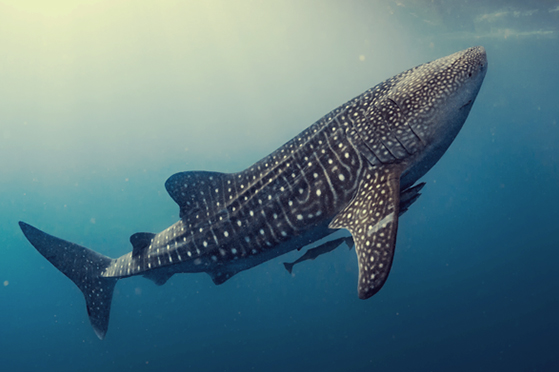WHALE SHARK
The whale shark or Rhincodon typus is the largest fish on earth, with a size of around 12 mts long. The whale shark eats plankton through filtration (to eat it opens its huge mouth letting in big quantities of water and plankton and small fish, when closing its mouth, it expels and filters the food through its gills.)
Its back and sides are of a grey or brownish-grey color, with vertical and horizontal lines across its back and white dots. Its abdomen is white and the dorsal fins point towards the back of its body; its back fin is large and bifurcates towards the tip.
Along Ruta 1, in La Paz, it is possible for visitors to snorkel with whale sharks that in spite of their huge size, are docile fish that allow swimmers get near. It is important to remember that each guide needs to have a rigorous training to be able to offer this experience and it is required that all visitors obey all the following regulations: https://goo.gl/fMvGDG
The whale shark or Rhincodon typus is the largest fish on earth, with a size of around 12 mts long. The whale shark eats plankton through filtration (to eat it opens its huge mouth letting in big quantities of water and plankton and small fish, when closing its mouth, it expels and filters the food through its gills.)
Its back and sides are of a grey or brownish-grey color, with vertical and horizontal lines across its back and white dots. Its abdomen is white and the dorsal fins point towards the back of its body; its back fin is large and bifurcates towards the tip.
Along Ruta 1, in La Paz, it is possible for visitors to snorkel with whale sharks that in spite of their huge size, are docile fish that allow swimmers get near. It is important to remember that each guide needs to have a rigorous training to be able to offer this experience and it is required that all visitors obey all the following regulations: https://goo.gl/fMvGDG

STOPS






